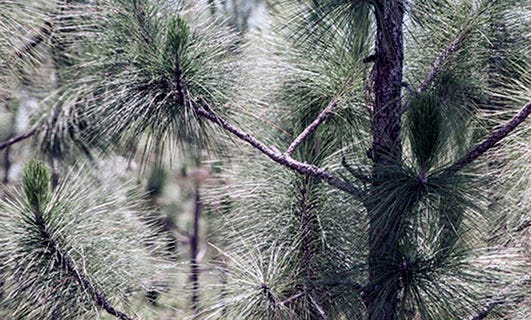
You have just harvested your timber stand, and now have at least 20 acres cleared.
What do you do next?
If you are going to replant pines in your cutover, you have two basic options here in Florida. You can plant longleaf pine or you can plant slash or loblolly pines. I combine loblolly and slash because the decision making process is the similar for those species, yet different from longleaf.
If you have drier sandy soils then longleaf is your best choice. It grows better than any other pine in sandy soils with the exception of sand pine. Sand pine though is not a great choice for commercial stands because it’s only used for pulp wood, the lowest value product.
If you have wet soils then you would look to slash or loblolly pines and a forester can help you decide which is best for your land. If you have good loamy soil that is not frequently flooded or ponded then you could reasonably plant any of the three main commercial species.
So how do you decide when soil is not an issue? Well, longleaf is usually planted using containerized plugs that cost around $200 per thousand. Slash and loblolly are usually planted using bare-root seedlings that cost around $60 per thousand. But factor in your chances of receiving cost-share money to help establish a stand and the cost of longleaf comes way down. Longleaf pine is the focus of most state and federal cost share programs and you are much more likely to get a contract to plant longleaf than you are to plant slash or loblolly.
Although longleaf can cost more on the front end to establish, it recoups the cost all along the way. A longleaf forest can be leased to hunters for more money because it makes better wildlife habitat.
Longleaf has a more open structure to its branches that allow more sunlight on the ground and that allows more herbaceous ground cover, which means more food and more nesting cover. It can be burned as early as one year after planting, which reduces competition from brush. So whether you are leasing your land for deer, turkey or quail, a longleaf pine forest can command a higher fee.
Longleaf pine straw is also the most preferred pine straw used for landscaping and commands a higher price. Landowners can be paid twice as much for longleaf pine straw compared to slash and three times more than loblolly pine straw, which is the lowest grade. When harvest time comes you are likely to have many more poles and saw timber with longleaf than slash or loblolly.
I am partial to longleaf because you have so many more options than with the other species. Landowners often focus on the upfront cost and how fast slash and loblolly grow in the first 10 years. But you never know what the market will look like 10 or 20 years down the road, and longleaf will catch up to slash and loblolly by age 20.
Longleaf is more disease resistant, aesthetically pleasing, wildlife friendly, hurricane resistant and therefore is a better tree for reducing financial risk. So if you can produce more valuable products, and have the flexibility to let the timber ride out bad markets, then longleaf is a better choice.
Resources
Several organizations can help you establish, restore and manage longleaf pine. A variety of programs are also available to help improve wildlife habitat on your forest. Some are listed below.
Natural Resources Conservation Service: Several programs give financial and technical assistance to plant longleaf pine in Florida. The Longleaf Pine Initiative is available to forest owners in select counties and Working Lands for Wildlife is for enhancing habitat for the gopher tortoise. Landowners apply through NRCS’s Environmental Quality Incentive Program. A district conservationist at your local USDA service center will help guide you through the application process.
Florida Fish and Wildlife Conservation Commission: Landowner Assistance Program biologists provide technical assistance to manage and restore longleaf pine and manage wildlife habitat. They can also provide information about cost share opportunities.
Florida Forest Service: County foresters give technical assistance managing your stands.
The Longleaf Alliance website: A comprehensive source of information, history, education, workshops and management information for restoring the longleaf pine ecosystem.
America’s Longleaf website: Also a comprehensive resource, including workshops and reports.
Arlo Kane is the northwest region conservation planning coordinator for Florida Fish and Wildlife Conservation Commission.
This article originally appeared on Crestview News Bulletin: What pine to plant? A case for longleaf
